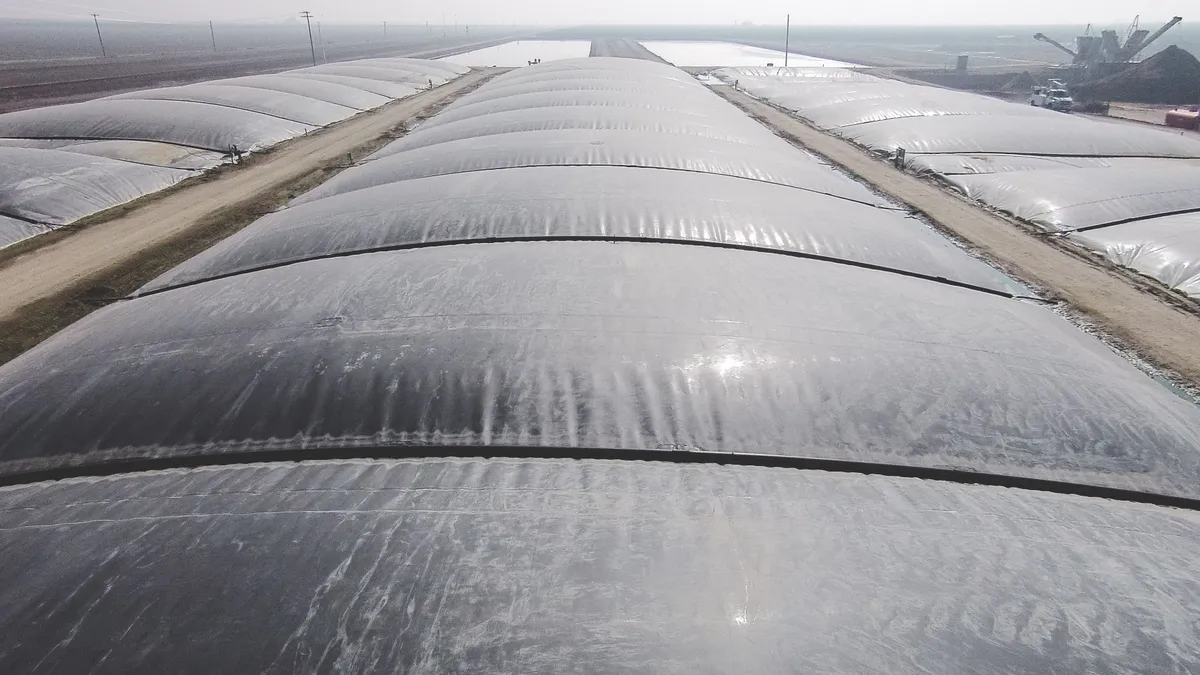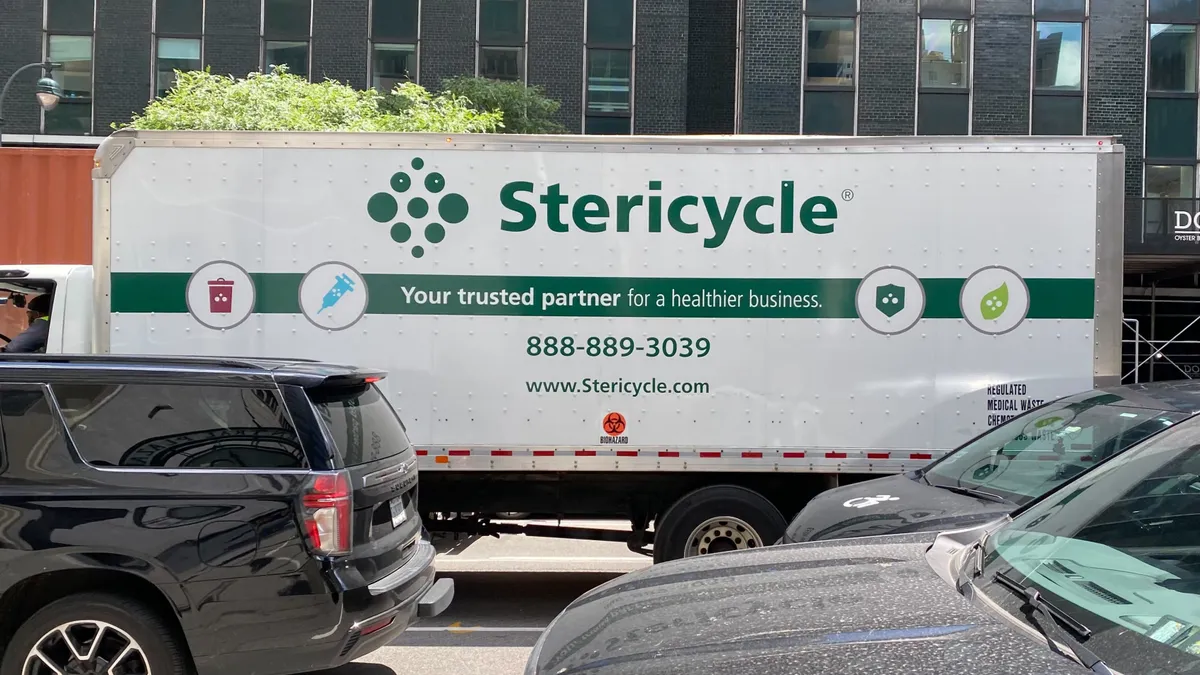Textile recycling projects across North America are moving forward as advocates look for ways to combat fast fashion and divert apparel and other items from disposal.
California recently enacted the first EPR for textiles program in the country, which recycling and waste groups say will create significant recycling, repair and reuse options for textiles by 2030. CalRecycle expects to start the regulatory process early next year.
The 2025 state legislative season could see more states rally behind similar EPR bills. Joanne Brasch, director of advocacy and outreach at the California Product Stewardship Council, says she’s keeping her eye on states like New York, which introduced a similar bill last year, as well as Oregon and Washington, though it’s too early to tell just how and when such bills will get introduced across the country.
California’s bill passed after two years, but other types of EPR programs in the state took much longer to adopt, she said. CPSC was a main sponsor of California’s textile EPR bill. “Advocates should start big, and just stick with it,” she said in an October interview. “Try from the beginning, and just keep trying.”
EPR is just one avenue for textile recycling advancements. Here’s a look at some recent partnerships working to establish textile recycling infrastructure and partnerships across North America:
Fashion-friendly Los Angeles moves forward with local textile recycling efforts
Los Angeles officials will continue a textile recycling pilot to divert textiles from disposal and upcycle the material into locally-made apparel.
The next phase of the project, run by LA Sanitation and Environment Department, the California Product Stewardship Council and other partners, aims to establish a centralized textile sorting hub for the city. LASAN also aims to partner with additional brands seeking fibers, yarn and fabrics made from textiles sourced in LA.
The program first started in 2020 as an effort to establish a local textile reuse market. LASAN recently completed phase 2 of the project, which diverted more than 1,000 pounds of cotton waste from disposal – mainly discarded fabric scraps from businesses, it said in a news release. LASAN is working with local apparel partners such as Outerknown to upcycle that material into clothing, bags and other items.
Though California’s textile EPR program is set to fully take effect by 2030, LASAN’s pilot aims to kickstart a local recycling program that could more rapidly build out infrastructure and business partnerships before that time. Los Angeles is already known as a fashion hub, and it is also gearing up to host major events such as FIFA World Cup soccer in 2026, the Super Bowl in 2027, and the summer Olympics in 2028, Brasch said.
“This pilot project was a proof of concept for brands to source textile waste from LA for upcycled and recycled-content products,” she said in a news release about the project.
Fabric waste from businesses makes up about 6% of waste sent to disposal in the city, said LASAN General Manager Barbara Romero in a statement.
Haulers such as WM, Ware Disposal and Athens Services also provided financial support for the program, as well as apparel companies like Gap and H&M. Local waste haulers also support the project by providing collection and transportation services to bring recovered textiles to designated processing facilities, according to LASAN’s recent progress report.
Goodwill, WM and Reju partner on North American infrastructure pilot programs
Goodwill will partner with WM and textile recycler Reju on a multi-year pilot program meant to advance textile recycling capabilities in North America.
The groups envision a regional “collaborative model” that would establish textile collection, sortation, reuse and recycling efforts, the companies said in a news release. Goodwill and WM specifically plan to work together on pilots to collect, sort and grade discarded textiles for resale.
A portion of the remaining textiles the group considers “not suitable for resale” would go to Reju to be recycled into new materials. Reju plans to build a U.S.-based facility in the future, the company said in a news release.
Goodwill has been working to position itself as a significant recycling industry player in recent years and has taken a particular interest in textile recycling partnerships. Goodwill’s regional organizations have partnered with recycled material apparel brands, contributed to university research and launched several studies and pilots. Local Goodwill groups are also involved in textile recycling policymaking, including California’s EPR for textiles bill.
In October, Goodwill Industries of West Michigan announced a partnership with sustainable tech company Harvest Nano to open a cotton waste textile processing plant meant to recycle textile waste into nanocellulose, a material used in automotive, aerospace and construction applications.
“Goodwill is positioning our local nonprofit enterprises at the forefront of creating systems for textile recycling and recovery,” said Steve Preston, president and CEO of Goodwill Industries International, in a statement.
The partnership builds on work WM is already doing in the textile recycling space. The company has invested in textile recycling companies like Debrand and offered financial support for regional textile efforts in Los Angeles and elsewhere.
New York report urges better accessibility, data to advance textile recycling efforts
A recent report on textile recycling in New York offers “a roadmap for action” to improve infrastructure, collection and consumer behavior.
The report, led by the Center for Sustainable Materials Management and Resource Recycling Systems, is meant to inform the state’s future work on textile EPR legislation, end market development and programs for increasing textile recovery, said Marisa Adler, a senior consultant for RRS, in a statement.
Major hurdles for textile recycling rates in the state include accessibility and convenience issues. The report recommends expanding drop-off locations for textiles and engaging more frequently with residents, about 63% of whom would rather donate clothing than throw it away, according to the report.
The report also highlights the lack of data and transparency around textile supply chains, end markets and waste flows, which could offer better insight into how to manage the material in the future. The report estimates that textiles make up about 5% of the state’s municipal solid waste.
The report acknowledges that textile waste is “traditionally under-regulated,” but noted existing efforts such as a commercial textile waste disposal ban in New York City. The report also highlighted the state’s “robust” textile collection infrastructure, including 62 counties that offer some kind of collection program and numerous thrift stores, collection bins and retail collection programs.
"As the nation’s fashion capital, with a vibrant economy and large population, New York’s relevance to a zero waste-driven textile recovery future is significant,” said Kate Walker, CSMM’s executive director, in a statement.


















